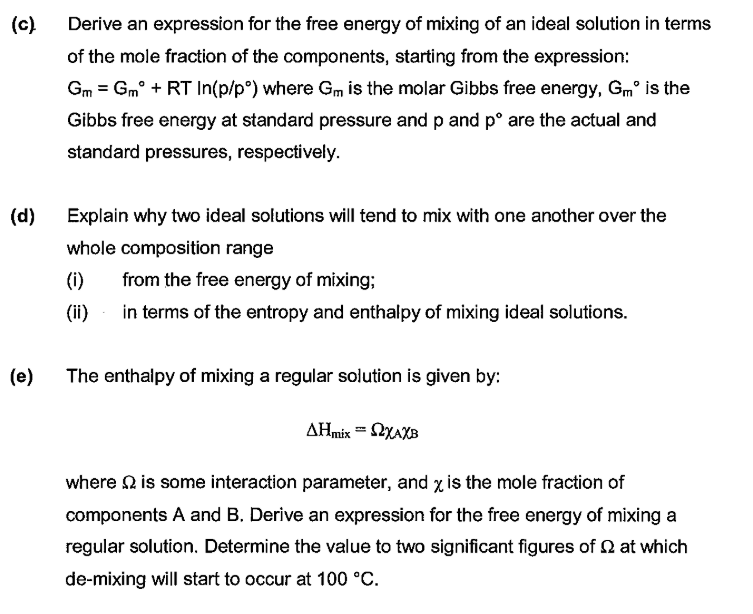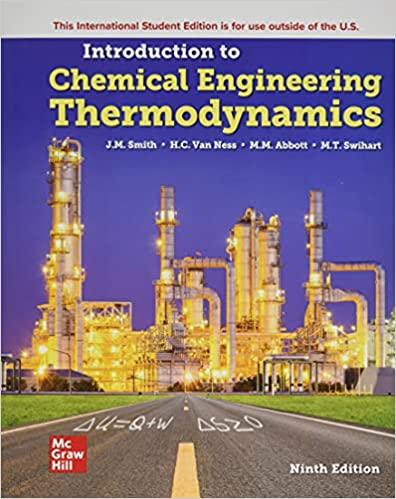Answered step by step
Verified Expert Solution
Question
1 Approved Answer
( c ) Derive an expression for the free energy of mixing of an ideal solution in terms of the mole fraction of the components,
c Derive an expression for the free energy of mixing of an ideal solution in terms of the mole fraction of the components, starting from the expression:
where is the molar Gibbs free energy, is the Gibbs free energy at standard pressure and and are the actual and standard pressures, respectively.
d Explain why two ideal solutions will tend to mix with one another over the whole composition range
i from the free energy of mixing;
ii in terms of the entropy and enthalpy of mixing ideal solutions.
e The enthalpy of mixing a regular solution is given by: where is some interaction parameter, and is the mole fraction of components A and Derive an expression for the free energy of mixing a regular solution. Determine the value to two significant figures of at which demixing will start to occur at

Step by Step Solution
There are 3 Steps involved in it
Step: 1

Get Instant Access to Expert-Tailored Solutions
See step-by-step solutions with expert insights and AI powered tools for academic success
Step: 2

Step: 3

Ace Your Homework with AI
Get the answers you need in no time with our AI-driven, step-by-step assistance
Get Started


